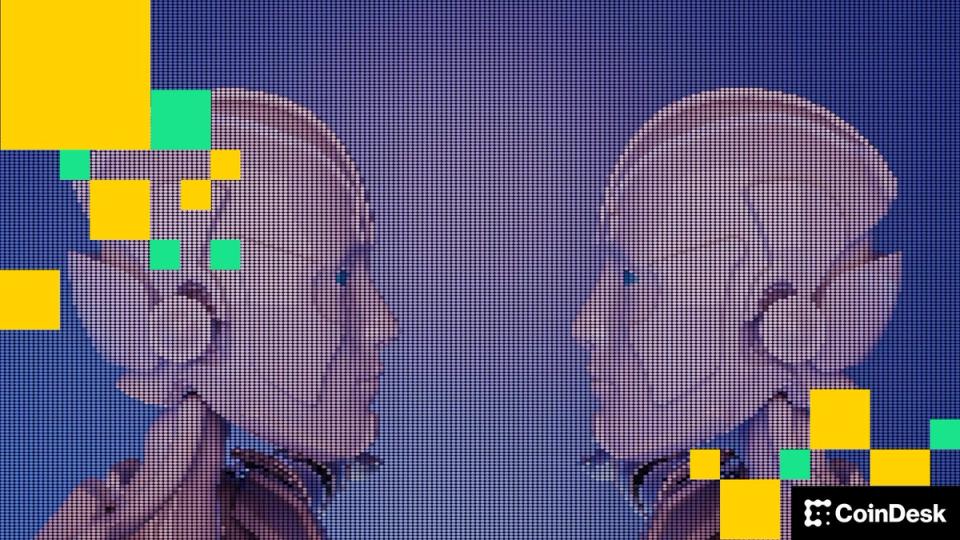AI agents, software systems that use artificial intelligence to achieve goals and complete tasks on behalf of users, are proliferating. Think of them as digital assistants that can make decisions and take actions to achieve the goals you set without needing step-by-step instructions — from a GPT-powered calendar Managers For trading bots, the number of use cases is growing rapidly. As their role expands across the economy, we must build the right infrastructure that will allow these agents to communicate, collaborate, and trade with each other in an open market.
Big tech players like Google and AWS are building early marketplaces and trading protocols, but this raises the question: Will they aim to extract huge rents through walled gardens again? It is clear that the capabilities of agents are increasing almost daily with the arrival of new models and structures. What is at risk is whether these agents will be truly independent.
Autonomous agents are valuable because they unleash a new user experience: shifting from software as passive or reactive tools to active and even proactive partners. Instead of waiting for instructions, they can anticipate needs, adapt to changing conditions, and coordinate with other systems in real time, without constant user intervention or presence. This autonomy in decision-making makes it uniquely suited to a world where speed and complexity outpace human decision-making.
Of course, some are concerned about what greater autonomy in decision-making and accountability would mean, but I see it as an opportunity. When agents handle repetitive, time-consuming tasks and balance what previously needed to be done in sequence, they expand our productive capacity as humans—freeing people to engage in work that requires creativity, judgment, composition, and purposeful communication. This is no fantasy, humanity has existed before: the arrival of corporations has allowed entrepreneurs to create entirely new products and levels of wealth that were previously unthinkable. AI agents have the ability to provide this capability to everyone.
On the intelligence side, truly autonomous decision-making requires an AI infrastructure that is open source and transparent. The latest OSS release from OpenAI is a good step. Chinese labs, such as DeepSeek (DeepSeek), Moonshot AI (Kimi K2), and Alibaba (Qwen 3), have moved faster.
However, independence is not entirely linked to intelligence and decision-making. Without resources, an AI agent will have little means to effect change in the real world. Thus, for agents to be truly autonomous, they must have access to resources and self-maintain their assets. Programmable, permissionless, composable blockchains are the ideal substrate for agents to do this.
Imagine two scenarios. A place where AI agents work within a Web 2 platform like AWS or Google. It exists within the limited parameters set by these platforms in a closed and essentially licensed environment. Now imagine a decentralized market that spans multiple blockchain systems. Developers can create different combinations of environments and parameters, so the scope for AI agents to operate is unlimited, globally accessible, and can evolve over time. One scenario sounds like a game idea for a market, the other is an actual global economy.
In other words, to scale not only AI agent adoption, but also agent-to-agent commerce, we need rails that only blockchains can provide.
Limits of central markets
AWS recently announced a proxy-to-agent marketplace aimed at meeting the growing demand for out-of-the-box proxies. But their approach inherits the same shortcomings and limitations that have long plagued isolated systems. Agents must wait for human verification, rely on closed APIs, and operate in environments where transparency is optional, if it exists at all.
To operate independently and at scale, agents cannot be confined to closed ecosystems that restrict functionality, pose risks to the platform, charge opaque fees, or make it impossible to verify what actions were taken and why.
Decentralized scales agent systems
An open ecosystem allows agents to act on behalf of users, coordinate with other agents, and work across services without permissible barriers.
Blockchains already provide the basic tools needed. Smart contracts allow agents to perform tasks automatically, with rules built into the code, while stablecoins and tokens enable instant, global transfers of value without payment friction. Smart Accounts, which are programmable blockchain wallets like Safe, allow users to restrict agents in their activity and scope (via gatekeepers). For example, a proxy may only be allowed to use whitelist protocols. These tools allow AI agents to not only act at scale, but also exist within risk parameters defined by the end user. For example, this could be setting spending limits, requiring multiple signatures for approvals, or restricting agents to whitelisted protocols.
Blockchain technology also provides the necessary transparency so that users can audit an agent’s decisions, even when they are not directly involved. At the same time, this does not mean that all agent interactions must occur on-chain. For example, AI agents can use off-chain APIs while specifying access restrictions and executing on-chain payments.
In short, decentralized infrastructure provides agents with the tools to operate more freely and efficiently than closed systems allow.
It’s already happening on the Onchain
While central players are still refining their agent strategies, blockchain technology is already enabling early forms of agent interaction. Onchain agents already exhibit more advanced behavior such as purchasing predictions and data from other agents. As more open frameworks emerge, developers are building agents that can access services, make payments, and even subscribe to other agents — all without human involvement.
The protocols already implement the next step: monetization. Through open marketplaces, people and businesses can hire agents, profit from specialized agents, and build new services that connect directly to this agent economy. Customizing payment models such as subscription, one-time payments, or bundled packages will also be key in facilitating different user needs. This would open the door to a completely new model of economic participation.
Why does this distinction matter?
Without open systems, fragmentation breaks the promise of seamless support for AI. An agent can easily complete tasks if it stays within a single ecosystem, such as coordinating between different Google apps. However, when third-party platforms are necessary (via social media, travel, finance, etc.), an open on-chain marketplace will allow agents to programmatically obtain the various services and goods they need to complete a user’s request.
Decentralized systems avoid these limitations. Users can own, modify, and deploy agents tailored to their needs without relying on vendor-controlled environments.
We’ve already seen this work in DeFi, with DeFi Legos. Bots automate lending strategies, manage positions, and rebalance portfolios, sometimes better than any human. Now, this same approach is being applied as Agent Cubes across verticals including logistics, gaming, customer support, and more.
The way forward
The agent economy is growing rapidly. What we build now will shape how it works and for whom it works. If we rely solely on centralized systems, we risk creating another generation of AI tools that appear useful but ultimately serve the platform, not the person.
Blockchain changes that. It enables systems in which agents work on your behalf, earn from your ideas, and enter a broader, open market.
If we want agents to collaborate, transact, and evolve without restrictions, the future of agent-to-agent markets must live on-chain.




